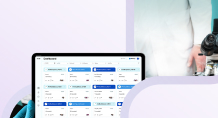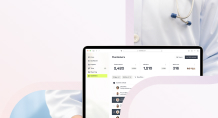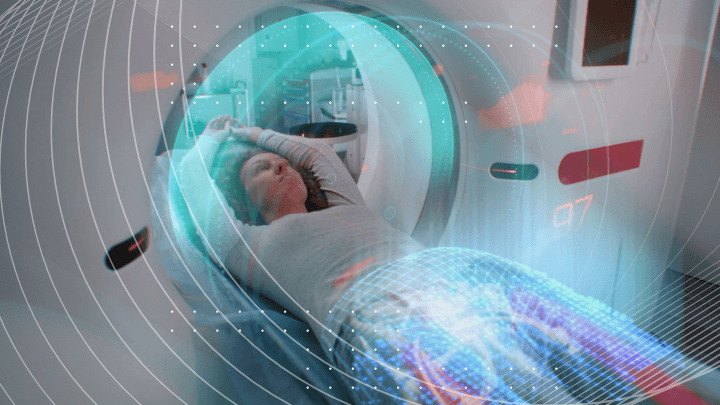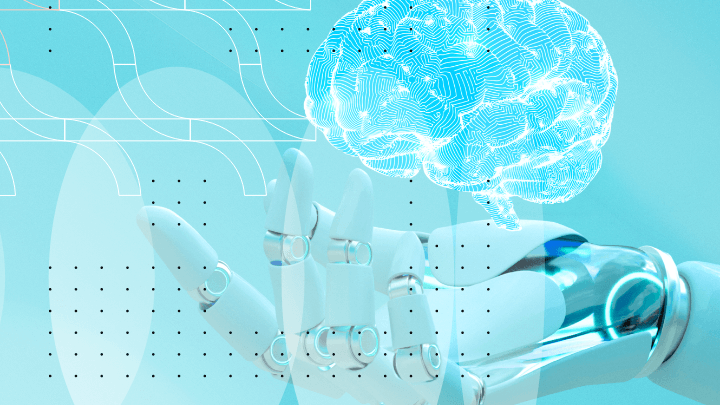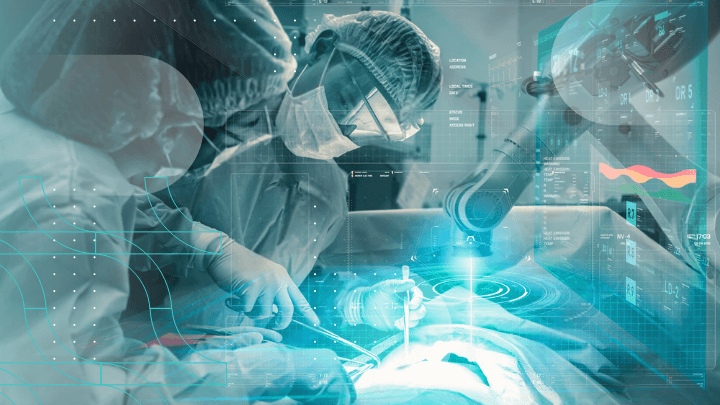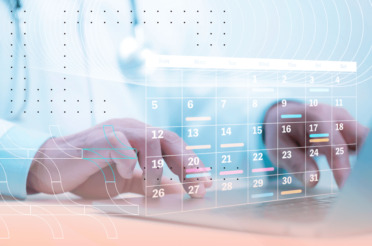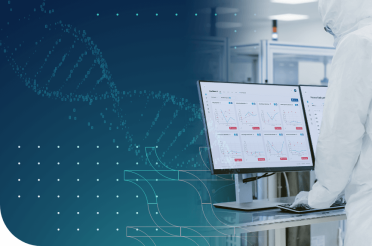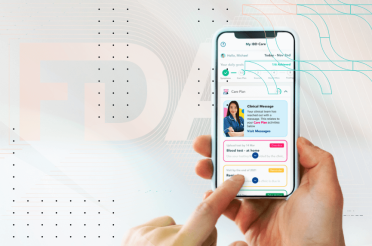Healthcare providers deal with repetitive tasks such as collecting patient data, managing prescriptions, billing, and patient onboarding on a daily basis. These tasks, while vital, are time-consuming and prone to human error, especially with the rising demand for medical services.
That’s why automation can improve patient outcomes by making these processes more effective, with 90 percent of large healthcare organizations already having an automation strategy.
This article focuses mainly on understanding the benefits like reduced costs, lower non-compliance risks, better quality of care, and improved patient experience due to implementing automation in healthcare. Moreover, it tackles the history and current applications of automation in medicine, the automation in diagnostic technologies, surgical procedures, patient monitoring and management.
Introduction to automation in the healthcare industry
For a solution to be truly automatic, it must initiate, run, and conclude without human intervention.
Automated services and products operate in the background without needing constant attention and complete tasks autonomously. Automated care is transforming healthcare by creating operational efficiencies unattainable with manual processes, reducing staff workload and improving the level of patient care.
Its main idea is to reduce the amount of administrative tasks on medical staff so they can focus on other important aspects of their job and minimize the burnout happening from extra work. It also positively impacts the medical staff satisfaction and retention, ultimately benefiting the entire healthcare system.
Automation lowers healthcare costs by integrating payers and providers and transforming document-based processes into intelligent, data-driven ones. It offers a holistic view of critical information for better decision-making. Additionally, automation reduces manual work, improving staff retention and upskilling opportunities. We will focus in more detail on the benefits automation in healthcare offers further in this article.
Some common examples of healthcare processes being replaced with automation include:
- Patient check-in and check-out;
- Sending appointment reminders;
- Managing prescription refills;
- Transferring medical records;
- Scheduling follow-up appointments;
- Managing chronic diseases;
- Distributing educational information;
- Creating and assigning tasks, and others.
When implemented properly, automated tools bring significant benefits to both healthcare professionals and their patients.
A brief history of automation in medicine
The history of automation in healthcare facilities began in the 1960s with the introduction of computerized systems for administrative tasks. They included patient scheduling and billing.
The 1980s saw the advent of more sophisticated hospital information systems (HIS), which integrated various administrative and clinical functions. In the 1990s, the emergence of electronic health records (EHRs) marked a significant leap, which allowed the digital storage and retrieval of patient data.
The early 2000s introduced robotic-assisted surgery, exemplified by the da Vinci Surgical System. The introduction of the system revolutionized minimally invasive procedures.
More recently, the integration of artificial intelligence (AI) and machine learning has enabled advanced diagnostic tools, predictive analytics and personalized medicine, further transforming healthcare automation and setting the stage for future innovations.
Let’s dive into the current application of automation in healthcare after running through its short history.
Current applications of automation in healthcare
Tech firms and startups are actively addressing healthcare automation, with companies like Google developing predictive models from big data to alert clinicians about high-risk conditions, and startups like Enlitic creating AI-derived image interpretation algorithms.
Companies such as Jvion offer tools that identify high-risk patients and suggest effective treatment protocols, providing decision support to clinicians. Additionally, firms like Foundation Medicine and Flatiron Health specialize in cancer diagnosis and treatment recommendations based on genetic profiles, aiding in the management of complex genetic variations.
However, integrating AI-based diagnosis and treatment recommendations into clinical workflows and EHR systems remains a challenge, with many current AI solutions being standalone or addressing specific aspects of care.
Patient engagement
Healthcare providers often develop effective care plans, but patient noncompliance, such as failing to follow treatment plans or attend follow-up visits, remains a significant challenge.
A survey of clinical leaders revealed that over 70% reported low patient engagement, with less than 25% of patients being highly engaged in many cases.
AI-based capabilities are increasingly being used to personalize and contextualize care, employing machine learning and business rules engines to drive targeted interventions and nudge patient behavior through messaging alerts and tailored content.
These technologies use relevant data from EHR systems, biosensors, and other devices to compare patient data and recommend effective treatment pathways.
Administrative applications in healthcare organizations
AI and automation have numerous administrative applications in healthcare systems, providing substantial efficiencies, especially since the average US nurse spends 25% of work time on regulatory and administrative tasks.
Robotic Process Automation (RPA) is particularly relevant, aiding in claims processing, clinical documentation, revenue cycle management, and medical records management. Chatbots, utilizing natural language processing, are also used for patient interaction, although concerns about confidentiality and usability remain.
Additionally, machine learning is employed for data matching and claims audits, helping insurers and providers save time and money by identifying and correcting coding issues and incorrect claims.
Automated jobs
There are concerns that AI will automate jobs and significantly displace the workforce, with predictions that 35% of UK jobs could be automated in the next 10 to 20 years. However, factors such as the cost of medical automation technologies, labor market dynamics, and regulatory acceptance may limit actual job loss to around 5%.
In healthcare, no jobs have been eliminated by AI yet, largely due to the slow integration of AI into clinical workflows and EHR systems. The roles most likely to be affected are those involving digital information, such as radiology and pathology, but the complexity and scope of tasks in these fields mean that substantial job displacement is unlikely in the near future.
Benefits of automation in medicine
Healthcare automated technologies enhance the efficiency of clinical and administrative processes, ultimately benefiting patient care.
Automated systems streamline healthcare services and reduce wait times by allowing care teams to update patient records immediately and speeding up data collection through automated forms. These forms enable quick collection of health data, clinical assessments, and patient feedback to facilitate faster sharing of diagnostic data among providers.
This results in quicker decision-making and can improve patient satisfaction, as patients spend less time in waiting rooms and more time recovering at home.
Real-time updates to patient records provide a comprehensive view of a patient’s health, enabling rapid and accurate diagnoses and treatments with less medical errors.
Faster Detection and Diagnosis
Advancements in medical technology, such as remote patient monitoring (RPM), enable earlier detection and diagnosis of health issues. RPM technology can automatically report changes in a patient’s vital signs, allowing for immediate intervention.
Wearable devices combined with RPM let patients conduct diagnostic tests at home, with data automatically shared with their care team. For chronic illness patients, this immediate reporting can prevent serious complications and provide peace of mind.
AI and machine learning further enhance diagnostic processes by identifying patterns and predicting potential diseases, leading to earlier and more effective treatments.
Strengthening Patient Relationships
Healthcare automation fosters stronger patient-provider relationships by creating strategic automated workflows that save providers time. Automated tasks like patient communication touch-points, surveys, and appointment reminders maintain consistent communication, improving patient satisfaction and compliance.
These advances enable clinicians to spend more time with patients, building trust and understanding their needs better. Strong patient relationships lead to increased adherence to care plans and better health outcomes. Providers can also learn about patients’ social support systems, which is crucial as care models shift towards home-based care.
Lower Costs of Services
Healthcare automation supports a preventive, patient-centered model that leads to earlier and more accurate diagnoses. This, in turn, helps avoid costly procedures.
Automated RPM devices reduce the risk of serious complications, resulting in better patient outcomes and reduced healthcare costs. Providers benefit by focusing on monitoring and treatment rather than managing adverse events.
The shift to coordinated, value-based care models encourages the adoption of automation to increase patient satisfaction and provider experiences and improve overall healthcare efficiency.
Challenges of Automation in Medicine
The adoption of healthcare automation also presents some key challenges. These include ensuring data security and HIPAA compliance, addressing potential job displacement for medical professionals, and managing the integration of automated systems within existing healthcare processes.
The prospect of automating processes often raises concerns about workforce reductions in medical practices. However, true automation allows healthcare workers to concentrate on clinically relevant tasks rather than administrative duties, which are typically outside their expertise. This shift does not necessarily lead to layoffs in an industry already struggling with chronic understaffing.
On the contrary, studies consistently show that fully automated solutions can enhance staff satisfaction by reducing their administrative burden. The key here is effective staff training for the successful deployment of automated solutions within a healthcare organization.
Integrating automated systems with existing healthcare processes and electronic health record (EHR) systems can be a daunting and expensive task, especially when these systems often don’t play well together. Protecting patient data is absolutely critical, so we must implement strong measures to comply with regulations and keep information safe.
The initial cost of adopting automation technologies can be a major hurdle for smaller practices. Beyond the technical challenges, it’s essential to maintain the human touch in patient care. Empathy and communication are irreplaceable elements that ensure automation supports rather than overshadows the personal connections that make healthcare truly effective.
Impact of Automation on Patient Care
In 2020, a survey revealed that nearly 90% of healthcare organizations had adopted AI and automation strategies, which marks a significant increase from 54% in 2019.
Implementing innovative digital technologies for automation is essential to meet the growing demands for efficiency and productivity in healthcare. Automation in healthcare utilizes advanced software to streamline processes and enhance service delivery. The impact of this process on patient care is enormous.
An automated system can streamline appointment booking, making it easier to schedule, reschedule, and cancel appointments, while also sending follow-up reminders to patients. Customer support automation through chatbots, workflows and emails reduces costs and response times, improves staff interactions and provides 24/7 help and support. Virtual check-ins improve accessibility and convenience by allowing patients to enter data directly into digital forms, reducing errors and freeing staff from data entry tasks.
Additionally, chatbots equipped with conversational AI can efficiently collect and manage patient information, which makes overall patient care better and more effective with less effort.
Automation in Diagnostic Technologies
Imagine a world where diagnosing medical conditions is faster and more accurate, ultimately saving lives. Automation in diagnostic technologies makes this possible, quickly providing precise medical diagnostics essential for preventing symptoms from worsening or severe illnesses from developing. Manual methods can lead to errors and inaccurate results, but AI steps in to offer speedy, reliable patient diagnosis.
For example, Google’s DeepMind, AI-powered imaging analysis in radiology, can scrutinize retinal scans and mammograms to detect diseases such as diabetic retinopathy and breast cancer with incredible accuracy. These AI algorithms can process thousands of images in a fraction of the time a human radiologist would take. They also identify subtle patterns and anomalies that might otherwise be missed.
This swift, accurate diagnostic process allows for earlier intervention, ensuring better patient outcomes.
Additionally, automated systems like dispensing machines ensure patients get the right medications quickly, reducing wait times and improving overall treatment efficiency. Automation is revolutionizing medical diagnostics, making healthcare more precise and effective.
Automation in Surgical Procedures
Automation in surgical procedures is revolutionizing the operating room, making improvements in precision medicine, patient outcomes and also reducing recovery times.
Robotic-assisted surgery, such as the da Vinci Surgical System, allows surgeons to perform complex, minimally invasive procedures with advanced control. These systems provide high-definition 3D views of the surgical area and enable surgeons to make precise movements through small incisions.
Automated systems also integrate advanced imaging technologies and offer real-time feedback and guidance. This significantly reduces the risk of human error. What’s more, automation in surgery can involve pre-operative planning software that helps in mapping out the procedure and post-operative monitoring systems. That can track patient recovery, ensuring any complications are detected early.
As these technologies continue to evolve, they hold the promise of making surgeries safer, more efficient, and less taxing on patients and healthcare providers alike.
Future Trends in Healthcare Automation
The ongoing advancements in AI and machine learning are making the future of healthcare automation look promising.
We’re heading towards a world where AI systems will personalize medicine to fit each patient and deep learning will make diagnostics even more accurate. Robotic process automation will continue to streamline administrative tasks, making healthcare operations smoother.
Plus, we’ll see a big progress in telemedicine, allowing for more remote patient care and reducing the need for in-person visits, which will make healthcare more accessible and convenient for everyone.
Conclusion
Healthcare automation is transforming the industry by taking over repetitive tasks, allowing medical staff to focus more on patient care. This shift improves efficiency, reduces errors, and also improves patient outcomes.
Many organizations are already realizing the benefits of automation and are adopting these technologies.
Despite some challenges, the future of healthcare automation looks promising, with advancements in AI and telemedicine making healthcare more accessible and effective for everyone.


